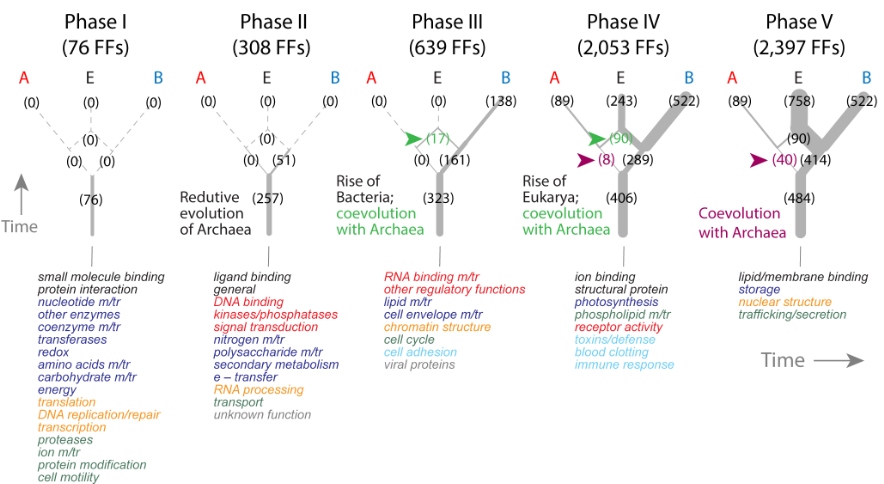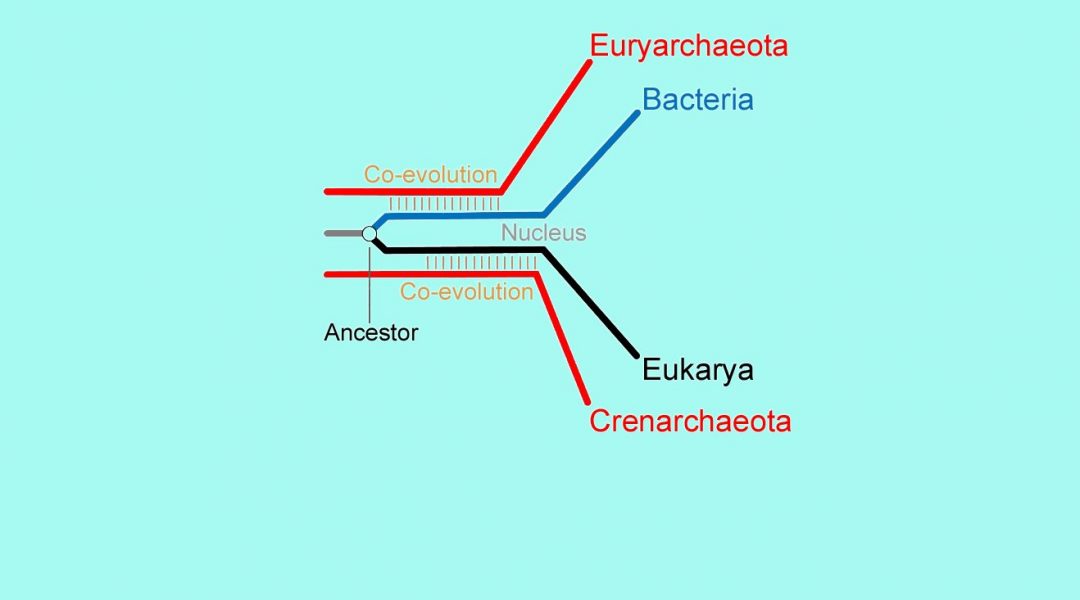How the three domains of life (Archaea, Bacteria and Eukarya) evolved is still a matter of debate. One hypothesis, namely the domain cell theory (DCT), proposes that each of the three domains of life arose from a pre-existing ancestor. In this scenario each domain represents a unique and independent cellular lineage. Another hypothesis posits that Eukarya arose by a cellular fusion event between a bacterium and an archaeon. In their article published in BioEssays, James Staley and Gustavo Caetano-Anollés challenge this popular cell fusion hypothesis. Instead they propose an Archaea-first model and discuss evidence supporting the co-evolution of early archaeal lineages with emerging Bacteria and Eukarya.
According to the Archaea-first hypothesis, the Archaea diverged from a stem line of descent that later on gave rise to the ancestors of Bacteria and Eukarya. This hypothesis is supported by evolutionarily highly conserved molecular features such as tRNA and 5S rRNA. Furthermore, Archaea possess ether-linked lipid membranes which differ from the ester-linked lipid membranes both found in Bacteria and Eukarya. This difference in the composition of the lipid membranes is in contrast to the fusion hypothesis.
By analyzing protein fold families (FFs), Staley and Caetano-Anollés provide further support for the Archaea-first hypothesis and define five distinct evolutionary phases. According to the authors, co-evolution between early Archaea and Bacteria as well as Eukarya occurred in phases III to V and was included significant horizontal exchange of genetic information between these three emerging domains of life.

In their article, the authors also present limitations of their Archaea-first model and discuss where/how it conflicts with other scenarios. They end by providing some interesting questions that arise from this model and propose some avenues for future research in that area.
For a more detailed description of the Archaea-first hypothesis, please also take a look at the video abstract for this article provided by the authors.

















